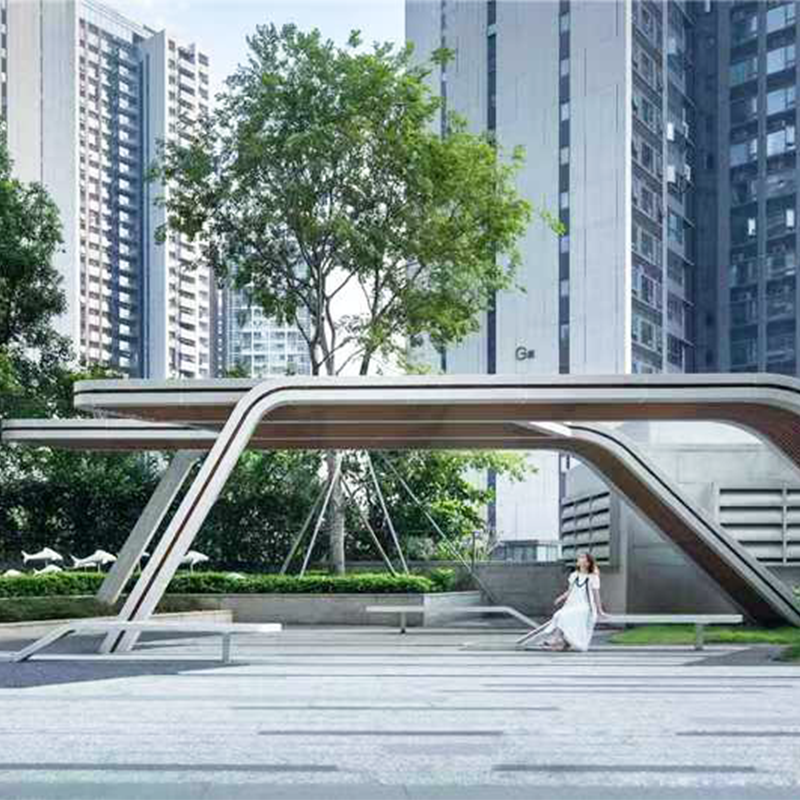Con il crescente ritmo di urbanizzazione, l'integrazione di tecnologie intelligenti all'interno dei servizi pubblici è diventata una necessità assoluta per le città moderne. I miglioramenti delle funzioni di servizio nei centri urbani si traducono direttamente in un aumento della qualità della vita dei suoi residenti, motivo per cui questo documento approfondisce le prospettive future della progettazione di prodotti di servizi pubblici per le città intelligenti di domani, con particolare attenzione alle soluzioni eco-compatibili, all'incorporazione dell' Con il progresso del mondo verso infrastrutture intelligenti, i centri urbani possono ora ridefinire come soddisfare la crescente popolazione urbana con maggiore attenzione all'accelerazione dell'efficienza e alla facilità di accesso.
Una delle principali tendenze che definiscono l'esatta natura dei prodotti di servizi pubblici anche oggi è l'idea o la ricerca della sostenibilità. Con l'ascesa delle città arriva l'urgenza di affrontare la politica globale e l'intervento climatico, supponendo che vogliano che l'ecosistema prevale utilizzando materiali sostenibili e progetti efficienti dal punto di vista energetico. Attualmente, sempre più aziende si dedicano a pratiche ecologiche utilizzando prodotti riciclati e progettando prodotti che mirano a avere un impatto minimo o nullo sulla società. Anche se questo cambiamento di ideologia farà miracoli per l'industria e i suoi consumatori, poiché c'è una crescente domanda di metodi eco-consapevoli e di sollievo per la terra.
Inoltre, l'aumento della tecnologia dell'internet delle cose è un altro grande cambiamento. Le strutture pubbliche avanzate sono dotate di sensori e altre opzioni di connettività per un recupero e un monitoraggio efficaci dei dati. Un esempio di questo tipo di rifiuti è rappresentato dai cassonetti pubblici che, una volta completamente pieni, notificano alle autorità e, quindi, possono essere strategizzate le vie di raccolta e in seguito ridotti i costi. Inoltre, agevolando il monitoraggio continuo e la notifica alle autorità con informazioni in tempo reale, i dispositivi IoT nelle aree pubbliche possono migliorare la prontezza al combattimento e le misure di difesa.
Inoltre, è evidente l'attenzione rivolta alla progettazione incentrata sull'utente nello sviluppo di prodotti per l'utilizzazione pubblica. Se le città devono sempre più rimanere multiculturali, è essenziale che le strutture siano progettate in modo da soddisfare le esigenze di tutte le persone e della popolazione idonea. Le caratteristiche inclusive come pavimentazione tattile e segnali audio agli incroci sono cruciali per la rappresentazione sociale. Inoltre, vengono impiegate strategie di coinvolgimento della comunità in modo che le strutture siano sempre gestite in modo da rispondere alle esigenze particolari delle persone che vivono e lavorano nella comunità.
Infine, ma non meno importante, i prodotti di servizi pubblici sono in linea con le tendenze globali grazie ai concetti di città intelligenti. In queste città moderne, come descritto sopra, le infrastrutture intelligenti, che comprendono illuminazione intelligente, banchi intelligenti e persino chioschi interattivi, sono uno dei punti di riferimento del bilancio del governo. Tali oggetti non rimangono inutilizzati poiché esaltano l'aspetto artistico delle aree urbane e allo stesso tempo servono la zona e i suoi visitatori. Per esempio, le banchine intelligenti alimentate a energia solare possono servire come punti di ricarica dei dispositivi mobili, migliorando così la comodità degli utenti.
Per riassumere, i prodotti di strutture pubbliche delle città intelligenti saranno incentrati sulla sostenibilità, sulle applicazioni IoT e sulle esigenze degli utenti. L'aumento urbano continuerà a richiedere un approccio innovativo che contribuisca a migliorare il tenore di vita della popolazione. Le parti interessate devono essere in sintonia con questi elementi per rispondere alle mutevoli esigenze della popolazione urbana e svolgere un ruolo nella costruzione di città intelligenti e sostenibili.

